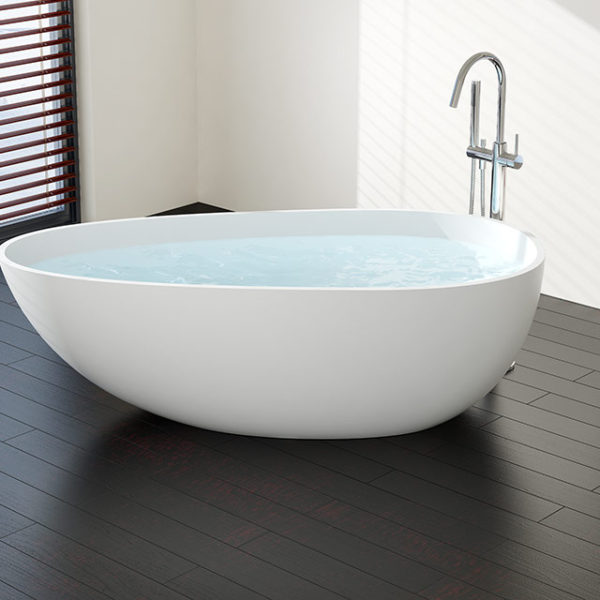Bathing is more than a routine; it’s a therapeutic escape that centers around the essential fixture in our bathrooms – the bathtub. However, while we indulge in the soothing embrace of warm water, few of us ponder over the science behind our tub’s water-holding capacity. In this comprehensive exploration, we unveil the intricacies of measuring your bathtub’s true capacity, shedding light on factors that influence it and offering insights into optimizing your bathing experience.
Standard Bathtub Capacities:
Standard bathtubs come in various shapes and sizes, each designed with a specific water-holding capacity. These capacities are determined by manufacturers based on standardized dimensions, allowing for a consistent experience.
Understanding the standard capacity serves as a baseline for gauging the potential volume your bathtub can hold.
Understanding Overflow Design:
Ever noticed a discreet opening near the top of your bathtub? That’s the overflow, a crucial design feature that prevents overfilling. Beyond its practical function, the overflow significantly influences the effective water-holding capacity.
By preventing spills and potential water damage, the overflow ensures a safer and more controlled bathing experience.
Measuring Depth vs. Usable Depth:
The depth of a bathtub is a crucial factor in determining its capacity. However, it’s essential to differentiate between the overall depth and the usable depth for bathing.
Considerations such as the placement of the overflow and individual comfort preferences can impact the effective depth, affecting the overall water level.
Influence of Tub Material:
Bathtubs are crafted from various materials, each with unique properties that influence water retention. Acrylic tubs, for instance, are known for their heat retention, providing a longer-lasting warm soak.
Cast iron and fiberglass also have distinct thermal characteristics, contributing to the overall bathing experience.
Accounting for Sloping and Angles:
The design of your bathtub, including sloping surfaces and angles, can influence both comfort and water usage.
A well-designed tub ensures an optimal balance, providing a comfortable bathing experience while maximizing water conservation.
Calculating Water Displacement:
When you immerse yourself in a bath, your body displaces water, affecting the overall water level. Understanding this displacement allows you to strike a balance between comfort and water conservation.
Small adjustments in body position can make a significant difference in optimizing water usage.
Optimizing Water Usage:
Beyond understanding the technicalities of your bathtub, there are practical strategies for optimizing water usage. Adjusting your bathing routine, incorporating water-efficient fixtures, and being mindful of wasteful practices contribute to a more eco-friendly bathing experience without sacrificing luxury.
Customizing Your Bathing Experience:
Tailoring your bathing experience involves more than adjusting water temperature. Consider adding bath accessories, experimenting with bath oils or salts, and even exploring the therapeutic benefits of aromatherapy.
Customization enhances your overall experience while ensuring you make the most of your bathtub’s capacity.
FAQs:
Q1: Can I trust the manufacturer’s stated capacity?
A1: While manufacturer specifications provide a baseline, factors like overflow design and personal comfort can affect the actual water-holding capacity.
Q2: How does the material of the bathtub impact water retention?
A2: Different materials have varying thermal properties, influencing water temperature retention and, consequently, your overall bathing experience.
Q3: Why does the overflow matter?
A3: The overflow prevents overfilling and potential water damage. It influences the effective water-holding capacity of the bathtub.
Q4: How can I calculate water displacement during a bath?
A4: Water displacement is influenced by your body’s presence in the tub. You can optimize water usage by finding the right balance between comfort and conservation.
Conclusion:
Understanding the true capacity of your bathtub transcends the mere knowledge of dimensions. It involves appreciating the synergy of design elements, materials, and personal preferences. Armed with this knowledge, you can elevate your bathing experience, creating a harmonious balance between the luxury of a deep soak and the responsibility of water conservation. The next time you immerse yourself in the tranquil waters of your bathtub, you’ll do so with a deeper understanding of its nuanced water-holding capacity.

A group of home improvement enthusiasts and bathroom design experts, combines in-depth knowledge and a shared passion to deliver engaging, informative content that guides readers through the world of bathroom innovation and style.

Leave a Reply